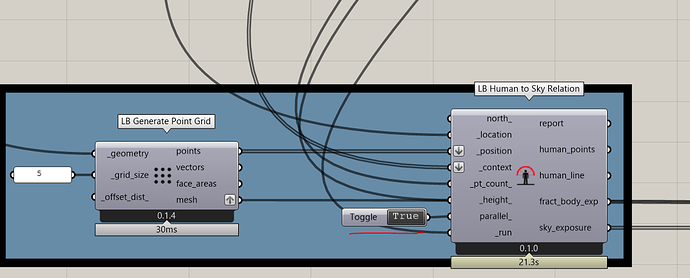Awesome! I was wondering if I should make a mapping sample but I’m glad to see you’re already a step ahead of me 
I checked your file and the results are definitely correct, though there are two performance enhancements that I would recommend, particularly if you are zeroing in on a month or a week at a time. First, you can run the intersection calculation that relates the points in the mesh to the geometry in parallel, which gave me a pretty big boost on my machine:
Second, the computation of solar MRT is the longest of the components and, if you apply the analysis period to the inputs of this component instead of the outputs, the whole process will run much faster.
A2-Thermal Comfort UTCI_LBTools[+]_CWM.gh (202.4 KB)
With those enhancements, I was able to drop the grid resolution to 2 meters and have it run in a couple of minutes on my machine.
Given that most of the slowness of the “Outdoor Solar MRT” component results from the calculation not running in parallel for each point, I’m thinking that I can eventually add a parallel_ option to that component that runs each of the _fract_body_exp_ on a separate CPU. But doing this would kinda give preference to the parallelization of multiple points in space over other types of possible parallelization so I think I’ll to give the component a little time “in the wild” just to make sure that this is the use-case that needs the performance boost the most.


